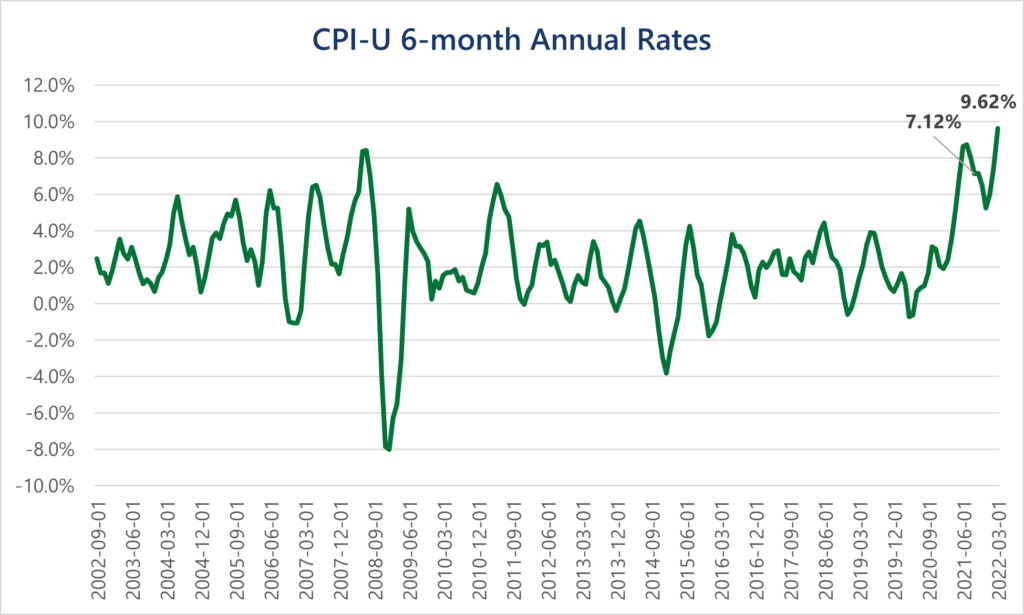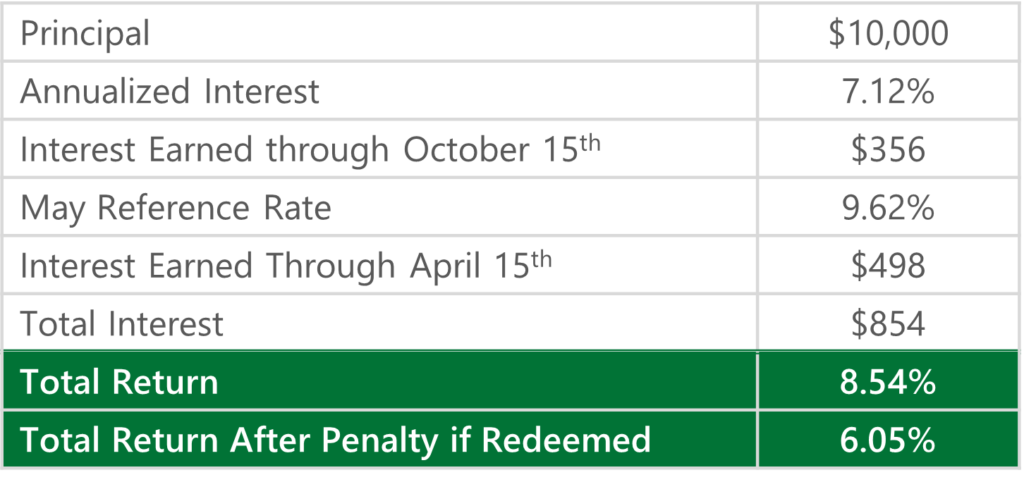With inflation soaring to 8.5% in the most recent CPI report, some attention has been garnered to a relatively obscure government-backed investment known as iBonds or Series I Savings Bonds. These bonds have been in the headlines for their mouth-watering 7.12% annualized yield which has now soared to an even higher 9.62% level in May, but how exactly do they work?[1] Isn’t investing built on the notion that “there is no free lunch?” So how can such an opportunity exist?
iBonds are a form of inflation protected investment, not too dissimilar from Treasury Inflation-Protected Securities (TIPS). Unlike TIPS, where inflation adjustments are made to the principal, iBonds coupons are adjusted by the U.S. Treasury in accordance with the inflation rate announced by the Bureau of Labor Statistics (BLS). The coupons are adjusted to match the most recent inflation release twice a year—on May 1st for the 6-month period September to March, and on November 1st for the period March to September. So given that it is now May, and in the most recent reference rate was 9.62%, the iBonds yield 9.62% annualized for the next six months–or 4.81% of your principal guaranteed over the next six months.

Source: St. Louis Fed, https://fred.stlouisfed.org/series/CPIAUCSL
Due to an absence of liquidity and limited overall access, these bonds don’t re-price to market rates like other instruments. For instance, the TIP ETF currently yields just 2.95%[2] because the principal amounts have increased, and investors have bid up their value in anticipation of higher inflation. None of that can occur with iBonds which allows them to produce above market yields. While the extremely attractive risk-free yields these products currently offer are indeed valid, they do come with some unique properties that Advisors will want to be fully aware of before potentially recommending them for clients:
- Interest accrues to principal on a monthly basis and compounds every 6 months when the rate is re-set.
- Individuals are required to hold the bonds for 12 months and there are penalties for not holding longer than 5 years. The prior 3 months interest payments are forfeited for a redemption prior to 5 years.
- There is a maximum of $15,000 per individual allowed to be purchased per year.
*while this may seem miniscule, keep in mind a household with 2 children could potentially invest up to $60,000
- Income taxes are due at a federal level, but payment can be deferred until you sell the bond
As an example of what holding one of the bonds might look like, the below outlines the numbers for a hypothetical 12-month hold if you had purchased on April 15, 2022

If you buy now the inflation rate from March to September will determine your interest rate from November to May, but even if it was somehow 0% you’d still receive 3.56% just from the first six months – still the highest risk-free rate available in the US market.
For clients with a near-term liability or generally low risk tolerance, iBonds may be a very effective solution to earn a safe, short-term return.
[1] Treasurydirect.gov
[2] iShares




